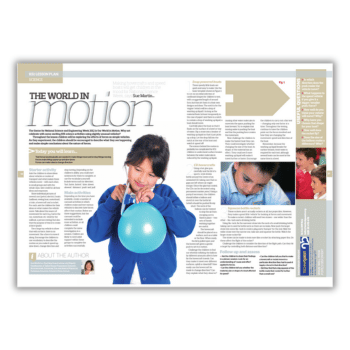Throughout this forces KS1 lesson, children will explore the effects of forces on simple vehicles.
As they experiment, encourage children to describe what they see happening and make simple conclusions about the nature of forces.
Forces KS1 learning objectives
In this lesson, pupils will learn that forces (pushes/pulls) are needed to make things move and to stop things moving. They’ll also learn that they make things speed up and slow down and can make objects change direction.
Starter activity
Ask children to share ideas about vehicles or modes of transport and what makes these vehicles move – with each other, in small groups and with the whole class. Give credit for all their ideas and responses.
Show individual pictures of several cars (petrol, electric), boats (sailboat, rowing boat, motorboat), a train, a hovercraft and a rocket. For each, ask the children for their ideas on what makes the vehicle move.
Talk about the source of movement for each (e.g. fuel in the car, motorboat, etc. wind for the sailboat, a person rowing) but also that the purpose of this is to create a force (push).
Use a large toy vehicle to show that with no force, there is no movement. Use a force to move it along. Encourage the children to use vocabulary to describe the motion as you make it speed up, slow down, change direction and stop moving.
Depending on the children’s ability, you could start sentences for them to complete, or use the vocabulary yourself. Include terms such as:
- direction
- fast/faster/fastest
- slow/slower/slowest
- distance
- push
- pull
Sue Martin is a Teaching Award winner and deputy headteacher at Talbot House Preparatory School in
Bournemouth. Previously, Sue was head of physics at Parkstone Grammar School in Poole, Dorset.














